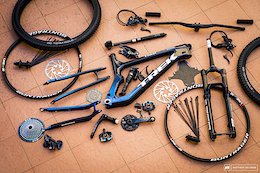In this blog I have explained the mechanism of total etag and also differnce between E-TAG and total etag in RAP in restful abap programming model .
Introduction :
ETAG: the etag concept ensures that the end user of an Odata service only changes instances with the state that is displayed on the UI .
Hence , the etag prevents changes of the BO that are not noticed by the Odata consumers .With Etag master each BO entity can be checked independently.
TOTAL E-TAG:
It enables optimistic concurrency checks durig the transition from draft to active data This total etag field on the database table is updated by the RAP runtime framework as soon as an active instance is changed Its value is compared when resuming a draft instance to ensure that the active data has not been changed after the exclusive lock has expired
The total E-tag is used for edit-drafts, a draft that has a corresponding active instance .As soon as the exclusive lock expires and an edit-draft is resumed , the total etag value of the draft is compared to the total ETAG value of the active instance .
The total etag is compared for all entities of BO
Total e-tag is useful when we are changing draft data to active data .
why total etag? and scenario
Suppose an application is not using draft concepts , if it is only using e-tag then that application is also modifying the same table
E-tag will work whenever we are loading the data in the front end , someone else changes the data and unknowingly saving the data – etag will be compered
In order to save the data and override we use etag .
SCENARIO:
When we start working on a draft table , we will put exclusive lock on active instance (say BOOKING ID-1)so that nobody can change the data.
Active data base–>it will become active instance–> active instance to it will become draft instance .
Suppose I have made some changes in active instance and – forgot to save it , But it will be automatically saved in draft instance – as we are working on draft
Chages made will be automatically saved in draft table .
As soon as we stop working – the exclusve lock will be removed from active instance (BOOKING ID-1) .
So now the I will come again ad start working on the draft instance which have Saved , again I will put exclusive lock and make some changes in the data and save it . As soon as we save – draft instance will be converted into active instance .
What happens if we don’t use total eTag?
Suppose somebody else did some changes and those changes are not saved in draft (the app is not using draft ) ,And we will be overwriting those changes with our changes, since we don’t exactly now whether someone eles has changed the data or not .
Total etag will be matched automatically based on the field @Semantics.systemDateTime.lastChangedAt: true
We need to match these field in behaviour definition
The framework will update total etag field each time –> whenever we are converting draft into active data .
Example :
1.create the table
2.create a consumption view and provide the necessary annotation .
3.create behaviour definition and provide total Etag and respective field.
4. create draft table .
5.create service def.
6.Create service binding.
7.OUTPUT
8.now user 1 opens the data
9.user 2 has the same data
10.now user 1 starts editing the data
11.suppose the user 2 trying to edit the same data–> he will get an error
13.we can see the entry in the dradft table
14.now the active draft is
15.User2 Trying to edit active draft with different value->getting error->No data found
16.Now user2 trying to edit with Same value->updated
So total etag comes into picture !!
Conclusion:
<< Whenever we wil save the data from active to draft instance – before saving I will compare total e-tag value
If it matches –> I shall save the data
If it does not match –> i shall not save
Whenever we change the active data –> total etag changes each time . If nobody changes the data —> total etag will be matched
If somebody changes the data–> total etag will not be matched , we need to discrad the current draft and we need to load the current data
NOTE: whenever we change the draft data into active data we need total etag
thank you !
– Pradeep Ishwar Devadiga
In this blog I have explained the mechanism of total etag and also differnce between E-TAG and total etag in RAP in restful abap programming model .Introduction : ETAG: the etag concept ensures that the end user of an Odata service only changes instances with the state that is displayed on the UI .Hence , the etag prevents changes of the BO that are not noticed by the Odata consumers .With Etag master each BO entity can be checked independently.TOTAL E-TAG: It enables optimistic concurrency checks durig the transition from draft to active data This total etag field on the database table is updated by the RAP runtime framework as soon as an active instance is changed Its value is compared when resuming a draft instance to ensure that the active data has not been changed after the exclusive lock has expired The total E-tag is used for edit-drafts, a draft that has a corresponding active instance .As soon as the exclusive lock expires and an edit-draft is resumed , the total etag value of the draft is compared to the total ETAG value of the active instance .The total etag is compared for all entities of BO Total e-tag is useful when we are changing draft data to active data . why total etag? and scenarioSuppose an application is not using draft concepts , if it is only using e-tag then that application is also modifying the same table E-tag will work whenever we are loading the data in the front end , someone else changes the data and unknowingly saving the data – etag will be compered In order to save the data and override we use etag .SCENARIO: When we start working on a draft table , we will put exclusive lock on active instance (say BOOKING ID-1)so that nobody can change the data. Active data base–>it will become active instance–> active instance to it will become draft instance .Suppose I have made some changes in active instance and – forgot to save it , But it will be automatically saved in draft instance – as we are working on draft Chages made will be automatically saved in draft table .As soon as we stop working – the exclusve lock will be removed from active instance (BOOKING ID-1) .So now the I will come again ad start working on the draft instance which have Saved , again I will put exclusive lock and make some changes in the data and save it . As soon as we save – draft instance will be converted into active instance .What happens if we don’t use total eTag? Suppose somebody else did some changes and those changes are not saved in draft (the app is not using draft ) ,And we will be overwriting those changes with our changes, since we don’t exactly now whether someone eles has changed the data or not . Total etag will be matched automatically based on the field @Semantics.systemDateTime.lastChangedAt: true We need to match these field in behaviour definition The framework will update total etag field each time –> whenever we are converting draft into active data .Example :1.create the table 2.create a consumption view and provide the necessary annotation . 3.create behaviour definition and provide total Etag and respective field.4. create draft table .5.create service def.6.Create service binding.7.OUTPUT8.now user 1 opens the data9.user 2 has the same data10.now user 1 starts editing the data 11.suppose the user 2 trying to edit the same data–> he will get an error13.we can see the entry in the dradft table14.now the active draft is15.User2 Trying to edit active draft with different value->getting error->No data found 16.Now user2 trying to edit with Same value->updated So total etag comes into picture !!Conclusion:<< Whenever we wil save the data from active to draft instance – before saving I will compare total e-tag value If it matches –> I shall save the data If it does not match –> i shall not save Whenever we change the active data –> total etag changes each time . If nobody changes the data —> total etag will be matched If somebody changes the data–> total etag will not be matched , we need to discrad the current draft and we need to load the current data NOTE: whenever we change the draft data into active data we need total etag thank you !- Pradeep Ishwar Devadiga Read More Technology Blog Posts by Members articles
#SAP
#SAPTechnologyblog












